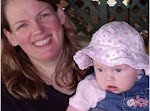Sometimes it is easier to do large chunks of applique in reverse. The fabrics cut slightly larger than needed and are laid down on the top. They are then straight stitched from behind and trimmed to shape. The technique works especially well with blocky shapes. Finer shapes require more finicky cutting.
.jpg)
.jpg)
Here is the pattern on the left. On the right is the design drawn onto the back of a piece of interfaced satin. I use this as a base for the applique. I have used a soft yellow to enhance the warm undertone tone of the white used in applique.
.jpg)
.jpg)
Pieces of fabrics are laid on top and stitched from behind following the design drawn onto the under fabric. Depending on the fabric, I will often use a spray adhesive to hold the fabrics in place. The gold sequin is called "mirror sequin fishscale". The sequins actually overlap like the scales of a fish. It is a pain to work with, but is spectacular under stage lights. I always wear safety glasses when using this fabric.
.jpg)
.jpg)
I used a co-ordinating teal velvet and metallic silk with the coral and gold, all laid on top, stitched from behind then trimmed away. This way you do not get texture show-though onto the uppermost fabric.
.jpg)
.jpg)
.jpg)
The white design was done in positve applique. The design was drawn onto a stiff interfacing, cut and spray glued into place. I basted it down before satin stitching the entire design in a fairly robust satin stitch. The finer design lines dictated a different technique. Doesn't the stitching make a huge difference?
.jpg)
.jpg)
The dancer wanted lace sleeves. This Guipure lace is heavy, so I added it after the rest of the work was done. The teal fabric under the lace also forms the upper teal applique..jpg)
.jpg)
.jpg)
Here is the pattern on the left. On the right is the design drawn onto the back of a piece of interfaced satin. I use this as a base for the applique. I have used a soft yellow to enhance the warm undertone tone of the white used in applique.
.jpg)
.jpg)
Pieces of fabrics are laid on top and stitched from behind following the design drawn onto the under fabric. Depending on the fabric, I will often use a spray adhesive to hold the fabrics in place. The gold sequin is called "mirror sequin fishscale". The sequins actually overlap like the scales of a fish. It is a pain to work with, but is spectacular under stage lights. I always wear safety glasses when using this fabric.
.jpg)
.jpg)
I used a co-ordinating teal velvet and metallic silk with the coral and gold, all laid on top, stitched from behind then trimmed away. This way you do not get texture show-though onto the uppermost fabric.
.jpg)
.jpg)
.jpg)
The white design was done in positve applique. The design was drawn onto a stiff interfacing, cut and spray glued into place. I basted it down before satin stitching the entire design in a fairly robust satin stitch. The finer design lines dictated a different technique. Doesn't the stitching make a huge difference?
.jpg)
.jpg)
The dancer wanted lace sleeves. This Guipure lace is heavy, so I added it after the rest of the work was done. The teal fabric under the lace also forms the upper teal applique.
.jpg)
The final product. In case you are wondering, that really is a solid block of rhinestones in five sizes and two colours glued down the centre front of the bodice.

4 comments:
Wow--that is quite a costume! Lots of work on it. I love applique, and reverse applique. Nice tutorial.
WOW it is absolutely gorgeous. You do such beautiful work. Every outfit has so many details and everyone is truly beautiful. Well done :)
Thanks Gwen and Ann!
Lots of work on it. I love applique, and reverse applique. Nice tutorial.
Work from home India
Post a Comment